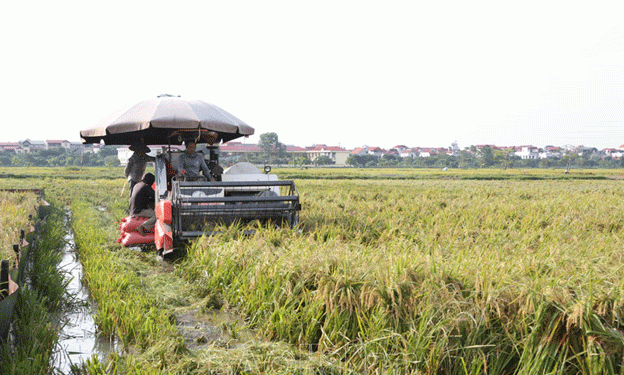Farmers in Kim Bảng are facing a race against time as they work to harvest their rice crops in the aftermath of severe flooding. Recent heavy rains and storms have significantly impacted the 2024 rice season, pushing farmers to take urgent measures to mitigate losses.
Current Harvesting Status and Challenges
As of the latest reports from the Kim Bảng Department of Agriculture and Rural Development, the district has planted 3,680 hectares of rice for the 2024 season. Early-season rice accounts for over 70% of this total, with the remainder being late-season varieties. Prior to the recent storms, nearly 400 hectares were already harvested. Post-storm efforts have added approximately 100 more hectares to the harvested total.
The 2024 harvest is expected to fall short of last year’s yields, primarily due to the adverse effects of recent floods and storms. These weather events forced many farmers to harvest their crops prematurely, impacting overall grain quality and yield. Additionally, prolonged rainfall has caused some rice plants to sprout while still in the field, further complicating the harvest process.
Impact of Weather Patterns on Rice Farming
Recent data indicates that the impact of extreme weather events on agriculture is becoming more pronounced. According to the Vietnam Ministry of Agriculture and Rural Development, flooding and unseasonal rains have increasingly threatened crop yields across the country. This trend reflects broader changes in climate patterns, which are causing more frequent and severe weather disruptions.
Strategies for Mitigation and Recovery
In response to these challenges, Kim Bảng farmers are employing various strategies to minimize losses. Early harvesting, though suboptimal, helps avoid further damage to crops that have been affected by flooding. Farmers are also working to manage fields with sprouted rice, which requires immediate attention to salvage as much as possible.
Local agricultural agencies are providing support by offering guidance on best practices for flood-damaged crops and facilitating access to recovery resources. Efforts are being made to improve flood resilience through better drainage systems and crop management practices.
The rice farmers of Kim Bảng are demonstrating remarkable resilience in the face of severe weather challenges. While the 2024 harvest is expected to be lower than previous years, the proactive measures taken by farmers and local authorities are vital in mitigating the impact of flooding. Continued adaptation to changing weather patterns and investment in flood management infrastructure will be crucial for sustaining rice production in the region.
Error




